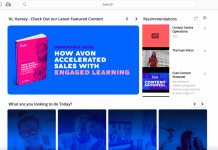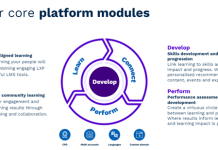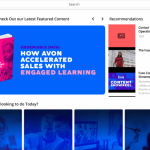Comprobo is a technology that verifies the identity, attention and comprehension of anyone using your online services. We see the principal use of Comprobo as an Online Proctoring tool: Comprobo can be used to ensure the identity and conformity of an individual taking an online examination. The potential of this service for the eLearning industry could be huge as it would enable eLearning courses to have integrated, validated examinations, and thereby provide new certification opportunities.

In this review I will talk about what Comprobo is, how it works, and its potential for eLearning.
What is it?
Comprobo provides two versions of its assurance validation technology: The standard version combines the validation components with a training and assessments delivery platform. RoboProctor is the Comprobo validation and assurance components configured to integrate with third-party solutions like Learning Management Systems. Both products are cross-platform software-as-a-service, browser-based technologies. This means that they do not require any installation to use; they simply take place in the browser. This is great as it makes the Comprobo products easy to use, and easy to roll-out to multiple users regardless of their technical proficiency, as well as removing the possibility of an IT headache.
Central to both products is the robust record that is created – it verifies the identity of a user, monitors their activity, and records the desired event and stores this record so that it can be reviewed. The technology provides a significant deterrent to cheating and gives confidence that the user has completed an assignment themselves and with diligence.
The level of cheating detection and prevention in both products is fully configurable to suit the purpose and audience. Biometric analysis is used to add a high level of monitoring to securely proctor online examinations and greatly reduce the possibility of cheating. This enables proctoring to take place online, removing the requirement for examinees to visit a test centre.
How does it work?
Central to the technology is the ability to assure the presence of users by using a Webcam. At the start of a session, the user is asked to provide a piece of photographic ID. This photograph could be used in conjunction with facial recognition technology to confirm that the person in front of the webcam is always the intended user.
The webcam is also used to take photos and video recordings of the user and their behaviour. This is part of what makes up the report of the proctored event, which can be stored with a 3rd party to ensure security against tampering and hacking.
There are other neat solutions to ensure user activity. Users are required to complete simple tasks throughout their session to ensure that they are paying attention, and questions can be posed to the user during the session to test their comprehension.
In addition the system monitors the browser and the use of other software and this means it can constantly be verified that the user is completing only the specified content, and not looking at anything unauthorised in their browser. This eliminates the possibility of the user cheating in their exam by using resources on their computer.
Future enhancements include the option of keeping a record of the user’s browsing activity, by recording what the user is looking at, typing and mouse movements. By using the webcam and this recording facility, Comprobo can deter and detect cheating such as the user moving away from the task at hand; looking at other materials on their computer; looking at other devices and materials apart from their computer; copying and pasting; and any suspicious behaviour that takes place in front of the webcam. By using Comprobo, an examiner can be sure of the level of security and conformity that would be produced at a test centre or during an invigilated exam. The results produced are robust enough to hold up in court.
What is Comprobo’s potential for eLearning?
As we have seen, the Comprobo products can match the level of invigilation that takes place at a test centre. As the Comprobo products take place entirely online, and RoboProctor can be integrated with a Learning Management Systems and is SCORM compliant, this means that secure invigilation can now take place in eLearning tests and examinations.
This opens the door for a new level of certification for eLearning. Previously, eLearning courses could be accredited based on their quality and the delivery of learning outcomes, but now they can be used to provide evidence for qualifications that require a user to be examined, and to provide a record of this examination. If remote proctoring takes off and is recognised as a genuine alternative to regular invigilation, then we might see a new breed of eLearning courses aligned to, for example, GCSEs and A-levels, which enable learners to work towards, and to achieve, a recognised qualification entirely online.
Comprobo also provides some features which can be used to enhance and create eLearning courses. Being able to add prompts to detect attention levels will provide another reporting criterion for eLearning courses which can be used to determine how effective they are, and these prompts can also be used to promote engagement throughout the course. The ability to add tests during videos is also an extremely useful feature. Any eLearning videos which did not previously feature interactive testing can now be turned from passive videos in to interactive courses which test comprehension and competency. This could make eLearning videos in to much more valuable learning experiences without the need for costly development work.
The obvious advantage of the Comprobo suite is that it eliminates the need for examinees to visit test centres, and the associated costs. However, it also eliminates the need for an assessor to visit an examinee in order to evidence their learning. This type of visiting can take place when a practical assessment is required, such as for a qualification in the waste and recycling industry. However, with remote proctoring, the evidencing of this kind of learning could take place remotely. With the learning for this assessment being eLearning, and the examination taking place with remote proctoring, Comprobo could revolutionise this type of qualification, turning it from an operation which requires multiple expensive on-site visits, to a process which takes place entirely online.
In conclusion, Comprobo provides an innovative and simple addition to online assessment. By offering an online solution which is as secure as regular invigilation, Comprobo can be used to enhance online courses and greatly increase their potential. As it is so easy to use, the opportunity for it be used on a large scale is real, and as such it could revolutionise the way we currently carry out examinations.












